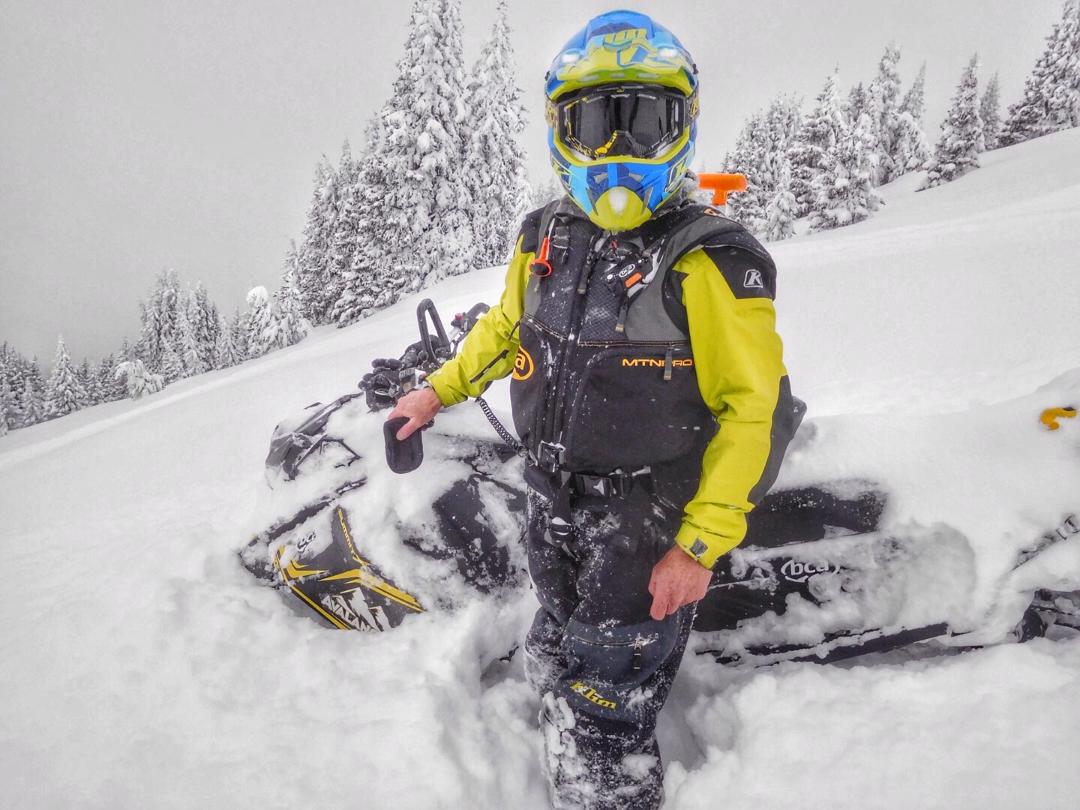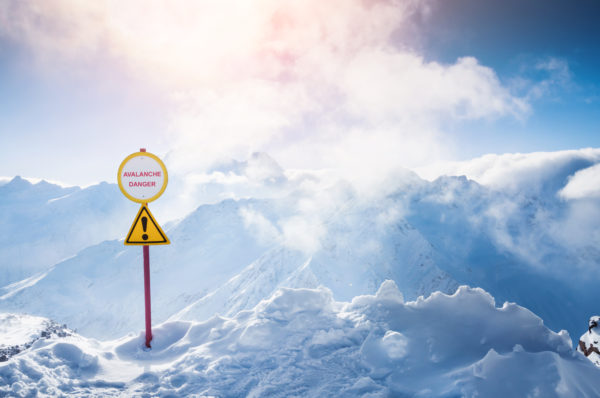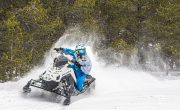By Mike Duffy
Most of you have heard the basics, and reasons for safety guidelines when riding in avalanche country. I’m going to give you the important details you’ll need to know. This article is based on years of researching avalanche accidents, mountain rescue, guiding experience, avalanche instructing, and training, and these are tips from 25+ years of being an avalanche educator.
The Basics
I have outlined the basics of what you need to know to begin, and this info is courtesy of ISMA.
5 Key Safety Guidelines
- Get the Gear… everyone in your group will need an avalanche transceiver, shovel, probe, and knowledge on how to use each of these pieces of equipment.
- Get the Training… Everyone in your group should, at minimum, attend at least one avalanche training course.
- Get the Forecast… The weather report is a must, and it’s constantly changing. Make a riding plan based on the current avalanche and weather forecast.
- Get the Picture… If you see recent avalanche activity and unstable snow exists, then you must assume riding on or underneath slopes is dangerous.
- Get out of Harms Way… Always go one at a time on all slopes, and don’t go up to help your stuck friend, and don’t group-up in avalanche run-out zones.
The details on the details
Transceiver: The quickest way to find someone who is completely buried is with a transceiver. This beacon transmits a signal that can be tracked by others in your group with their transceivers. Having one is absolutely necessary. Trying to find someone with only a probe can take hours and even days. You’re not going to just dig yourself out of the snow if completely buried.
Furthermore, it doesn’t do you much good if you’re just wearing a transceiver and aren’t proficient in how it works. At the time of rescue isn’t the time to learn how to use it. You will want a digital 3-antenna avalanche transceiver. This new technology means advanced features, ease of use and faster rescues.
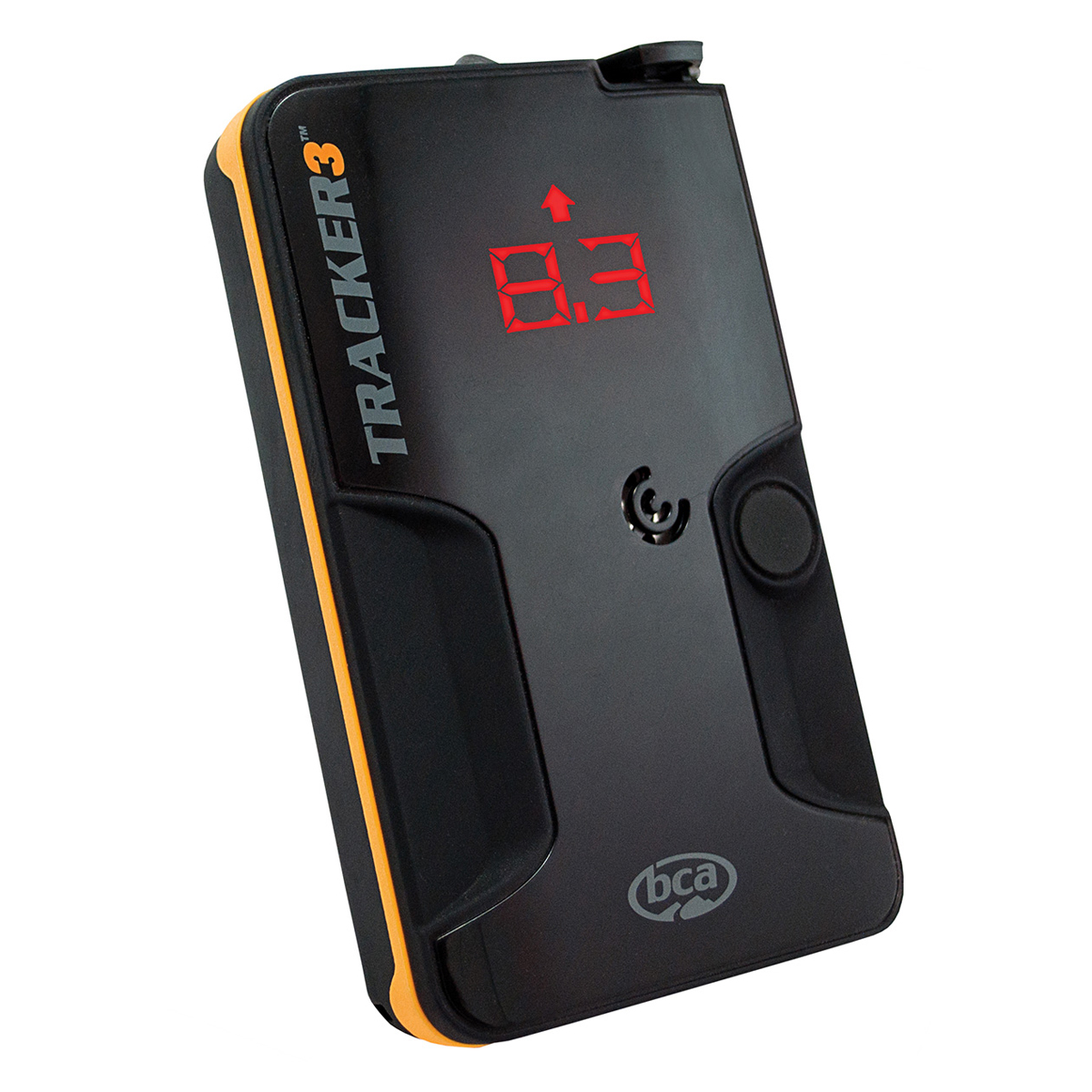
Shovel: Get one that is metal, with a larger blade and high quality. I prefer one with an extendable shaft which makes it easier to dig deeper. Inexpensive and plastic shovels could break. I carry two shovels with one in my airbag pack, so that if I get separated from the snowmobile or the snowmobile gets buried, I can still pull off a rescue. The second shovel is on my tunnel bag and it’s a hoe type shovel (so I can move snow faster in many situations). If stuck in or below avalanche terrain, I don’t have to remove the pack to access the shovel, therefore losing the safety of the airbag. If I have only one shovel, it’s always in my pack.
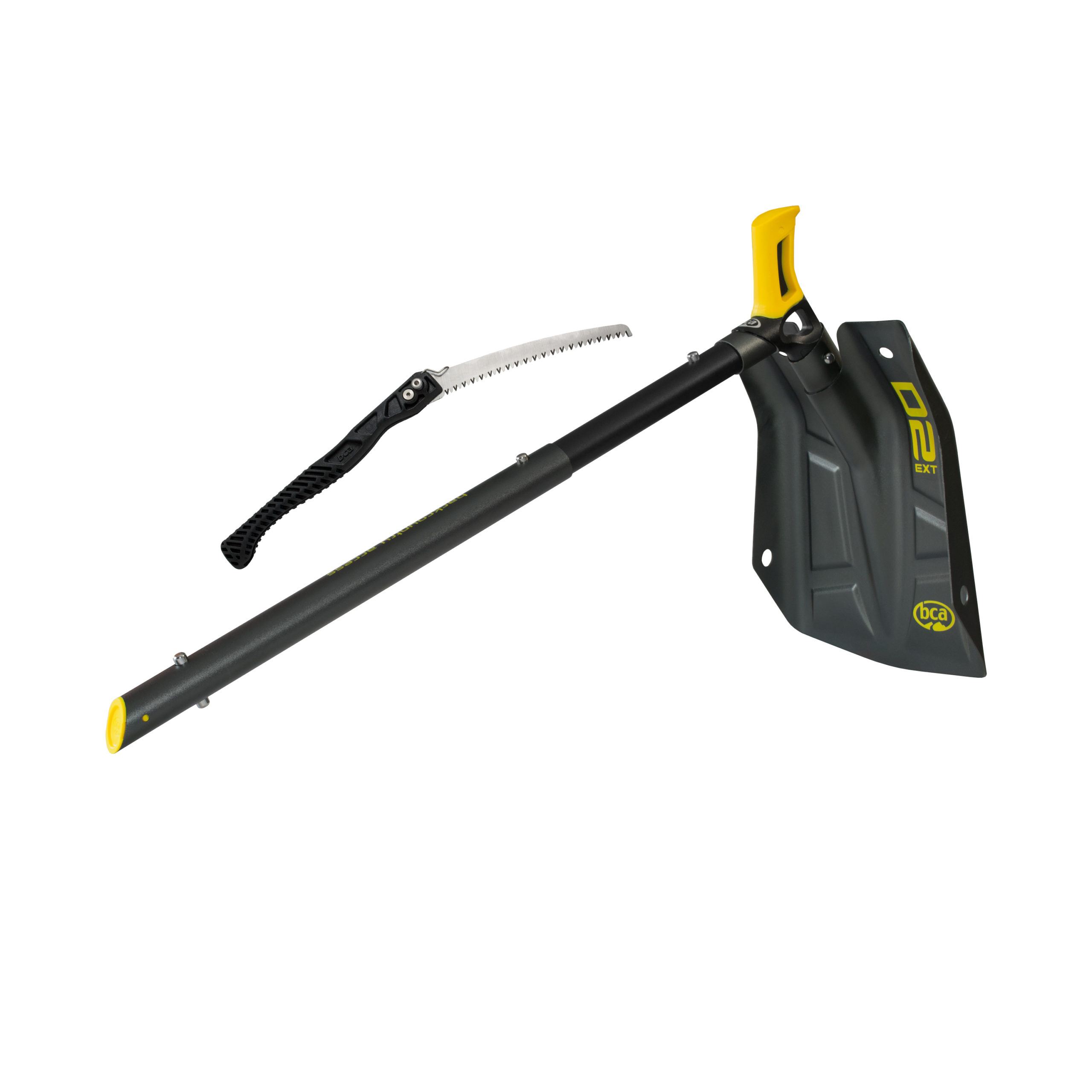
Probe: Get a large diameter aluminum one or carbon fiber that is 300cm or longer. This length allows you to stand upright and probe deeper. Flimsy probes will deflect to the side or could break. Also, get a probe you can deploy with your gloves on.
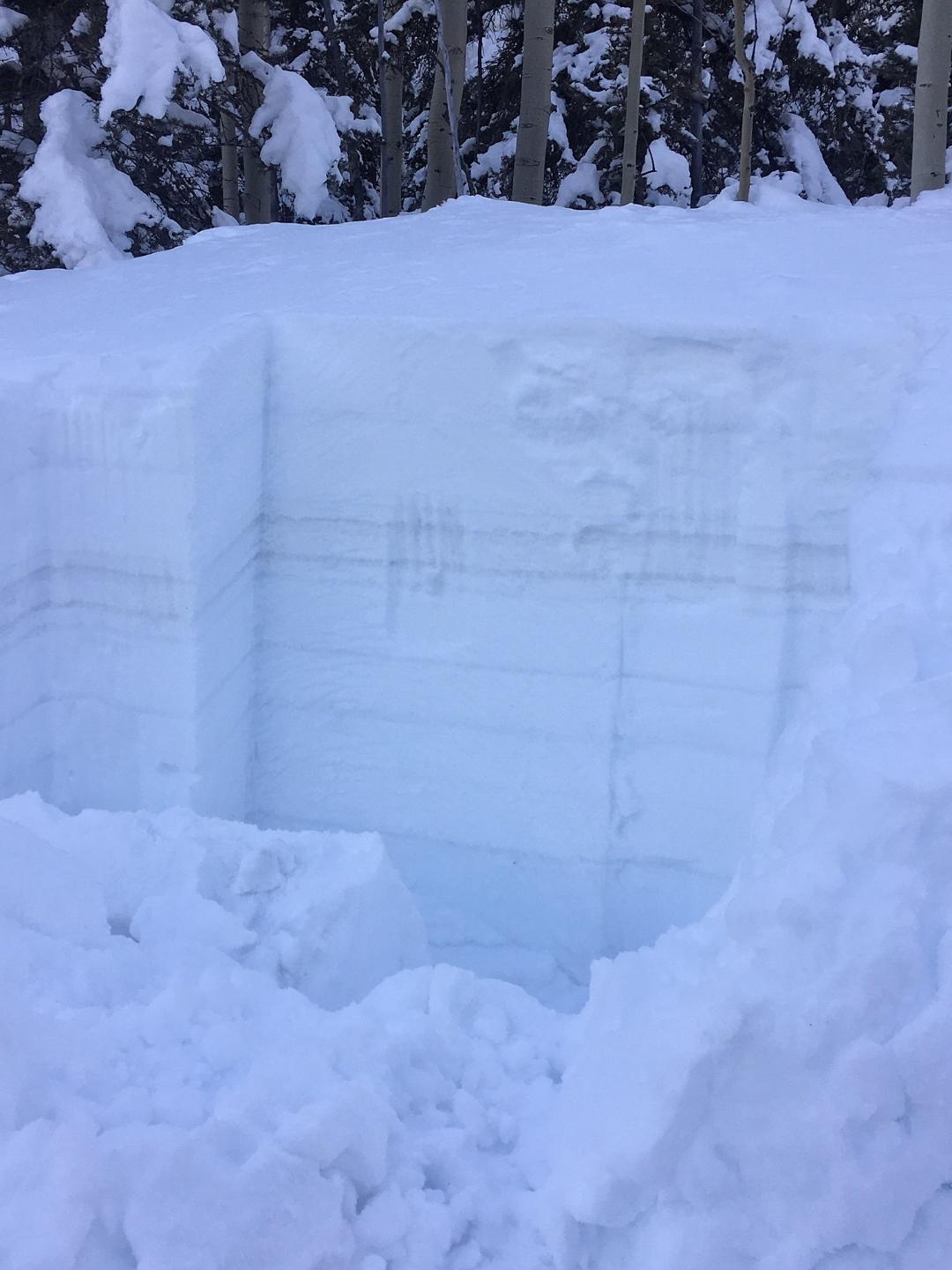
Pack: Get one that fits your body. I don’t wear a pack larger than 25 liters. Lighter/smaller volume packs are more comfortable, then it won’t tire you out, and wont’t hinder your technical riding. Make sure all the essentials for survival, rescue, and first aid goes into your pack. Also make sure your transceiver is worn on the body, never in the pack. Packs can get separated from riders in avalanches.
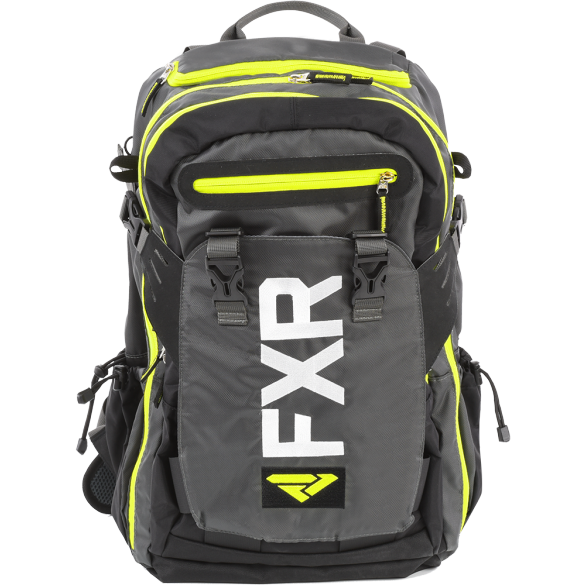
Airbag packs: They work, but are used in conjunction with advanced training, educated decisions, good judgement, and terrain selection appropriate for the avalanche problems. However, it is not the end-all for surviving an avalanche. Unfortunately some avalanches are just not survivable. Too many riders are forgoing advanced training and buying an airbag instead, which is not a recipe for success. I wear a protective vest that incorporates an airbag pack that is transceiver and radio compatible. I always wear the leg strap so my pack doesn’t get ripped off my body in an avalanche.
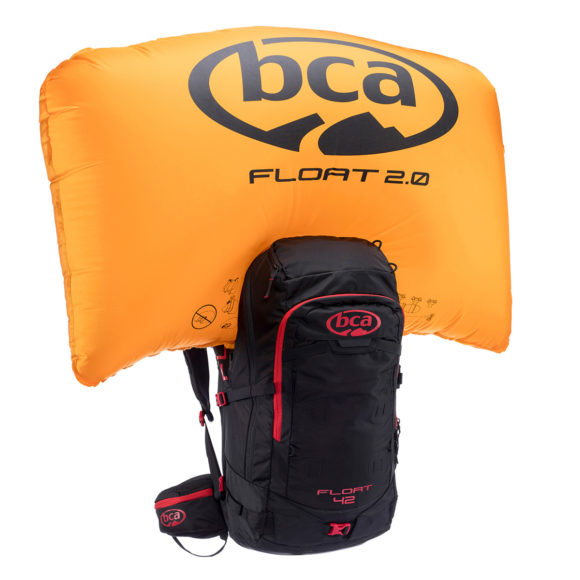
Pack Contents: Be ready to spend the night out, administer first aid and get help to your location. A GPS satellite messenger is a great tool that every group in my opinion should have. I use the Garmin InReach Explorer. Other items should include a map and compass, fire starters, headlamp, spare batteries, bivy sack, first aid kit, survival kit, saw, food and water, tow strap, knife, tools, clear goggles, and extra clothes. Essentials for survival, rescue and first aid go in pack, extras go in the tunnel bag.
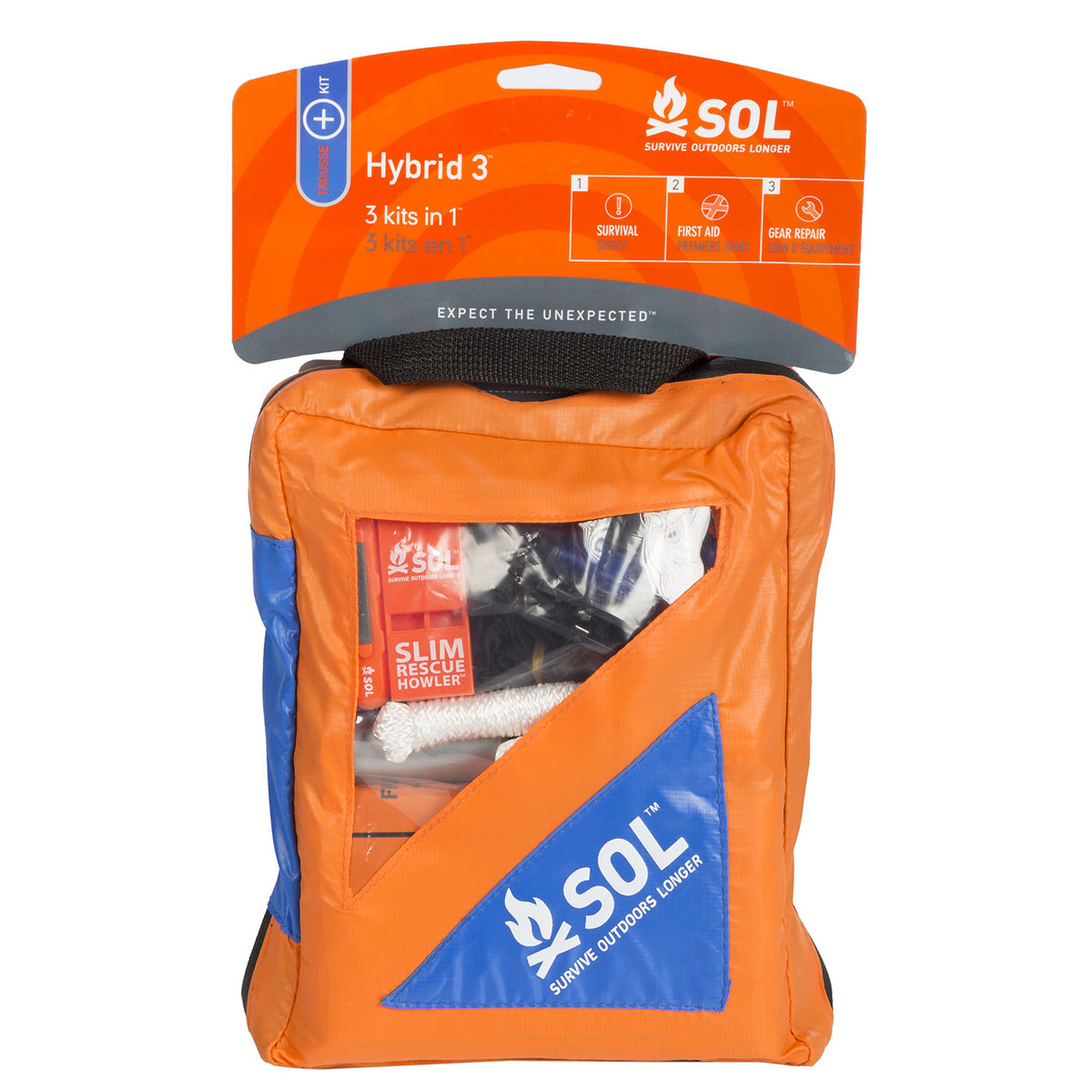
Getting the training
There are many levels of avalanche training and all are positive, to some extent. You can start here with free training on these websites, but don’t stop here. www.backcountryascender.com or www.avalanche1.com
Being skilled takes hands-on, on-snow training, practice and feedback from professionals. Take the time to take a class, no one I’ve ever met over decades of classes and sessions have ever regreted it.
Don’t learn about avalanches through trial and error. Your one mistake could be your last, and avalanche accidents are easily avoidable with the right knowledge and terrain selection. This doesn’t mean staying at home or staying on mellow terrain all the time, it could be as simple as picking the right terrain for the conditions. The higher the danger, the higher the skill you require. Get your entire group trained, so everyone is on the same page and at the same skill level. If you’re the only one with training and get buried, you’re out of luck.
Know what is happening within the snowpack
All snow looks good, and you need to understand that certain layers within the snowpack can fail under more weight (you on your sled). Approximately 90% of the fatalities in avalanches are triggered by you or someone in your group. The avalanche danger rating is not the key factor you should be looking at in the forecast. What you need to know and understand is the “avalanche problem” or type of avalanche(s) you are dealing with and the terrain that is suggested for the problem. Even on a moderate danger day, a slope with a persistent weak layer and connecting slopes should be avoided. Remote triggers are likely with persistent weak layers. These avalanches can be very unpredictable and the stability varies greatly.
Tracks on the hill, do not mean it’s safe, it usually means someone has not hit the weak spot yet. Stability can vary greatly from slope to slope and on the same slope. Educated riders know when to back off when persistent weak layers are present. Moderate danger with a persistent weak layer essentially means it is harder to trigger, but if it does go, it could still be large and deadly. Patience to wait until conditions are right and the discipline to alter your riding according to the problem are essential.
Get the picture
It’s a lot more than seeing recent avalanches. With some of the most dangerous avalanches, you may see no signs of instability, the weak layer(s) may react for several weeks or longer after a storm. Getting the picture involves knowing the avalanche problem(s) that you will encounter, the terrain to ride and avoid for the avalanche conditions and the mindset you should have. Being adept also involves working as a team, communication and route finding. You should be constantly thinking, observing and analyzing when riding. You’re looking around for clues and evaluating stability. Good riders have an excellent sphere of awareness. Be ready to hit the brakes or speak up if you don’t agree with where the group is going. Don’t just blindly follow.
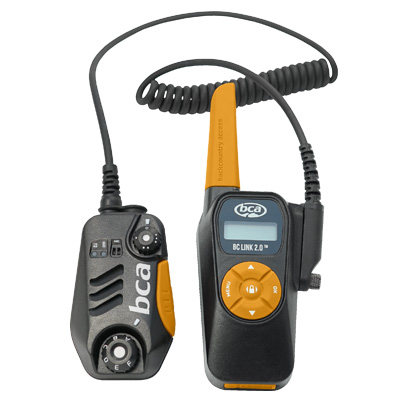
Getting out of harm’s way
- Always go one at a time on or under avalanche slopes. Multiple complete burials in North America statistically result in a fatality. It is much easier to rescue one person than multiple. A rescue is delayed if you as a rescuer gets caught.
- Never go above your partner. Get out of the way if you are below a rider. Going above or going to help your friend on an avalanche slope can trigger the avalanche. Don’t help someone who is stuck on the hill. The additional weight can trigger an avalanche. If they can’t get their own sled out, they shouldn’t be riding the slope. This is a common mistake that has resulted in many fatalities.
- Have a plan, and communicate it. Radios have changed snowmobiling. It is so much easier and safer to ride with them. Have decision points and constantly discuss options.
– Who’s first, who’s last?
– What is the route.
– Where is your stopping area.
– Where are safety zones, where viewers will watch.
– Escape route.
- Stay in voice or visual contact. If you’re in avalanche terrain out of view of the group and get caught, first they need to realize you’re missing, then they have to spend time looking. This can significantly delay the attempted rescue. Radios can warn riders of conditions, routes, oncoming avalanches and easily locate stuck riders. Use the buddy system in trees.
- Alter your riding according to the avalanche problem(s). For a long career riding in the mountains, you must adapt your riding to the avalanche problems, otherwise you are just relying on luck. Sad to see so many fatalities when dangers were obvious to educated and informed riders.
Keys when riding potential avalanche areas
- Is the slope steep enough to slide? Get an inclinometer (slope meter) or slope angle app. Most riders are not even close to being accurate in guessing the steepness and don’t realize they are in avalanche terrain. With a slope meter, you become much better. I use the Avalanche Inclinometer app by Iterum, LLC and the BCA app.
- Are you in the runout zone? Will the avalanche hit you? Are nearby trees damaged or missing branches from getting hit by avalanches? The run out zone is how far the avalanche can run and where the debris ends up. A generalization is the avalanche can run out 2.5 times the vertical fall of the avalanche. Too many riders park too close. Are you in or above a terrain trap that will compound the consequences of an avalanche? Look at the trees, rocks, cliffs, depression, steep creek bed, or narrow valley.
I hope this has been helpful. It’s just a start in being a smart mountain rider and preparing for what you could incounter. Implement what you have learned and take advanced classes – be prepared.
Have a great winter.
Mike Duffy
